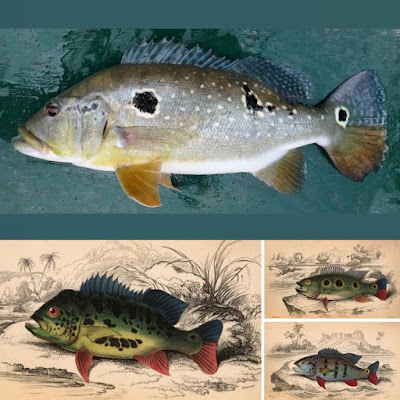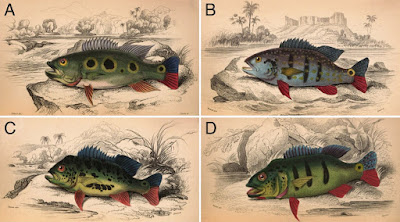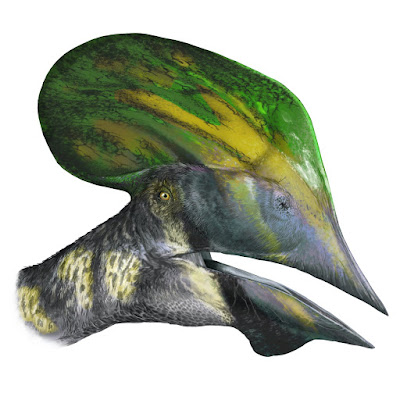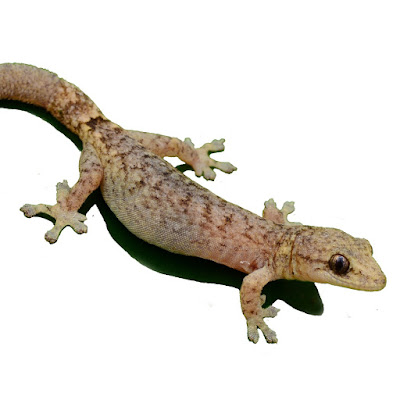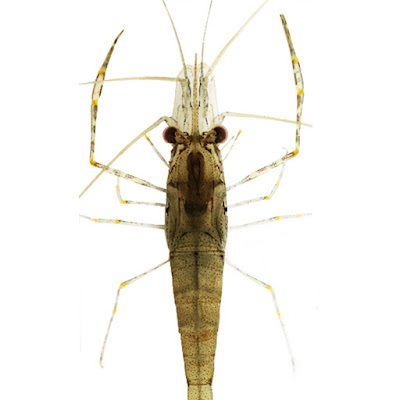[Most Recent Entries] [Calendar View]
Monday, April 6th, 2020
| Time | Event | ||||
| 9:36a | [Ichthyology • 2020] Cichla cataractae • A New Species of Peacock Bass (Cichliformes: Cichlidae) from the Essequibo Basin, Guyana and Venezuela
Abstract A new species of peacock bass, Cichla cataractae, is distinguished from all congeners by molecular evidence and unique patterns of adult and juvenile pigmentation. Juveniles (<150 mm SL) have sides of body dominated by a series of three conspicuous dark blotches with the one below soft dorsal fin largest, attenuated posteriorly (long teardrop shape) but distinctly separated from elliptical caudal blotch; same blotches eventually with pale border (ocellated) in largest juveniles. Adult pattern on sides dominated by two distinct dark blotches, each one ocellated; anterior blotch rounded, located below anterior base of spinous dorsal fin and not extending above anterior lateral line; posterior blotch highly irregular in shape, located below soft dorsal fin and often displaced dorsally; additional dark blotch below posterior base of spinous dorsal fin generally absent or small, ocellated or not, and level with anterior blotch; vertical bars on sides generally absent or faint; postorbital stripe always present, highly broken into irregular series of dark spots, each one usually ocellated. Cichla cataractae is endemic to the Essequibo Basin where it typically inhabits rocky shoals in river channels with swift current. The new species is sympatric with the more widely distributed C. ocellaris, a species that prefers lentic habitats. Molecular analysis supports C. cataractae as a distinct lineage in a clade of Cichla containing C. temensis, C. melaniae, C. mirianae, C. piquiti and C. pinima. The oldest extant specimens of the new species were collected by Carl H. Eigenmann in 1908 and documented in his seminal "The Freshwater Fishes of British Guiana" (Eigenmann, 1912). KEYWORDS: biodiversity, biogeography, freshwater, neotropical, systematics, taxonomy Cichla cataractae, new species Falls Lukunani Distribution and habitat.—Cichla cataractae is only known from the Essequibo River channel and its major left-bank (western) tributaries draining the Guiana Shield uplands such as the Cuyuní, Mazaruni, Burro Burro and Rupununi (Fig. 7). The species is strongly associated with rocky shoals in flowing channels of clear to mildly turbid rivers. This affinity for water flowing over rocks is the reason for its local name, Falls Lukunani. Adults and subadults are not normally found in floodplain habitats, but the species likely enters flooded marginal areas during some periods and life stages (e.g., as broodguarding adults or juveniles seeking food and refuge from predation). Etymology.— Species name derived from cataractae, Latin for waterfall or rapids; treated as a noun in apposition. Local names.— In Guyana, Cichla cataractae is often distinguished as the Falls Lukunani whereas C. ocellaris is considered the Pond Lukunani.
Mark H. Sabaj, Hernán López-Fernández, Stuart C. Willis, Devya D. Hemraj, Donald C. Taphorn, and Kirk O. Winemiller. 2020. Cichla cataractae (Cichliformes: Cichlidae), New Species of Peacock Bass from the Essequibo Basin, Guyana and Venezuela. Proceedings of the Academy of Natural Sciences of Philadelphia. 167(1); 69-86. DOI: 10.1635/053.167.0106 | ||||
| 12:29p | [Paleontology • 2020] Afrotapejara zouhri • A New Tapejarid (Pterosauria, Azhdarchoidea) from the mid-Cretaceous Kem Kem Beds of Takmout, southern Morocco
Abstract A new pterosaur, Afrotapejara zouhri gen. et sp. is described on the basis of a partial rostral fragment from the Cretaceous Kem Kem beds of Takmout, near Erfoud in southern Morocco. The taxon is distinguished from all other Tapejaridae on the possession of a dorsal expansion of the rostral margin a short distance from the rostral tip. Tapejarid features include a downturned rostrum (autapomorphic), edentuly, expansion of the rostral median crest (autapomorphic) and the presence of small foramina on the lateral margins and occlusal surface. The new specimen is the fourth edentulous pterosaur taxon from the Kem Kem beds and is the first unambiguous occurrence of Tapejaridae in Africa. Keywords: Pterosauria, Azhdarchoidea, Tapejaridae, Cretaceous, Africa, Morocco Systematic palaeontology PTEROSAURIA Kaup, 1834 MONOFENESTRATA Lü et al., 2009 PTERODACTYLOIDEA Plieninger, 1901 AZHDARCHOIDEA Nessov, 1984 TAPEJARIDAE Kellner, 1989 Genus AFROTAPEJARA gen. nov. Derivation of generic name. A combination of Afro for Africa and tapejara from the Brazilian pterosaur Tapejara. Afrotapejara zouhri gen. et sp. Derivation of specific name. After Dr Samir Zouhri, Moroccan palaeontologist based in Casablanca who has helped us so much in our work in Morocco. David M. Martill, Roy Smith, David M. Unwin, Alexander Kao, James McPhee and Nizar Ibrahim. 2020. A New Tapejarid (Pterosauria, Azhdarchoidea) from the mid-Cretaceous Kem Kem Beds of Takmout, southern Morocco. Cretaceous Research. 112, 104424. DOI: 10.1016/j.cretres.2020.104424 Ibrahim helps discover new species of flying reptile from 100 million years ago | ||||
| 12:31p | [Herpetology • 2020] Four New Burmese Species of Hemiphyllodactylus Bleeker (Squamata: Gekkonidae) from Distantly Related Parapatric Clades from the Shan Plateau and Salween Basin
Abstract An integrative taxonomic analysis based on morphology, color pattern, and the mitochondrial gene ND2 recovered four new species of Hemiphyllodactylus Bleeker that are endemic to the Shan Plateau or Salween Basin in eastern Myanmar. Hemiphyllodactylus ngwelwini sp. nov. from the Shan Plateau is part of the earlier described “eastern Myanmar clade” renamed herein as the north lineage and H. kyaiktiyoensis sp. nov. and H. pinlaungensis sp. nov. of the Shan Plateau and H. zwegabinensis sp. nov. of the Salween Basin compose an entirely new Burmese clade herein referred to as the south lineage. Although the north and south lineages come within 46 km of one another on the Shan Plateau, they are not sister lineages but sequentially separated by two lineages from Yunnan, China and another from northwestern Thailand. Hemiphyllodactylus zwegabinensis sp. nov. is the first species of this genus to be recorded from the Salween Basin and is known only from a wind-blown cloud forest on the top of the insular, karstic mountain Zwegabin in Kayin State. All other Burmese species except for H. typus, are endemic to the various localities throughout the Shan Plateau. These four new species bring the total number of Hemiphyllodactylus in Myanmar to at least 10 which is certainly an extreme underestimate of the diversity of this genus given that we discover new species at every upland locality we survey. Keywords: Reptilia, Myanmar, Burma, gecko, integrative taxonomy, phylogeny, upland endemism
Hemiphyllodactylus ngwelwini sp. nov. Ngwe Lwin’s Slender Gecko Etymology. The specific epithet recognizes and honors Mr. Ngwe Lwin, northern Program Manager of Fauna and Flora International in Myanmar. Mr. Ngwe Lwin has been supportive and invaluably instrumental in facilitating our field work in Myanmar since October of 2017. Hemiphyllodactylus zwegabinensis sp. nov. Zwegabin Mountain Slender Gecko Etymology. The specific epithet is a toponym referring to the type locality of Zwegabin Mountain. Hemiphyllodactylus kyaiktiyoensis sp. nov. Kyaiktiyo Mountain Slender Gecko Etymology. The specific epithet is a toponym referring to the type locality of Kyaiktiyo Mountain, Mon State, Myanmar. Hemiphyllodactylus pinlaungensis sp. nov. Pinlaung Slender Gecko Etymology. The specific epithet is a toponym referring to the type locality of Pinlaung City, Shan State, Myanmar. L. Lee Grismer, Perry L. Jr. Wood, Evan S. H. Quah, Myint K. Thura, Jamie R. Oaks and Aung Lin. 2020. Four New Burmese Species of Hemiphyllodactylus Bleeker (Squamata: Gekkonidae) from Distantly Related Parapatric Clades from the Shan Plateau and Salween Basin. Zootaxa. 4758(1); 45–82. DOI: 10.11646/zootaxa.4758.1.2 | ||||
| 12:47p | [Crustacea • 2020] Macrobrachium tenuipes • A New Stygophile Freshwater Prawn Species (Caridea: Palaemonidae) from A Karst Cave of Guangxi, southwestern China
Abstract Based on morphological, molecular, and ecological evidences, a fourth species of cave-dwelling shrimp Macrobrachium tenuipes sp. nov. is described from Guangxi Zhuang Autonomous Region, southwestern China. This new species with smooth carapace and the extremely slender pereiopods, can be separated from other congeners by the shape of rostrum; the segmental ratios, the arrangement of teeth on the cutting edge of the fingers of second pereiopod; the longer and narrower scaphocerite; and the longer uropodal diaeresis spine. The new taxon is genetically distinct from 18 other species of Macrobrachium for which COI and 18S rRNA sequences are available. The data observed on the habitat and ecology will contribute to the conservation for M. tenuipes sp. nov. Keywords: Crustacea, Macrobrachium, New species, Stygophile prawn, Freshwater biodiversity, Integrative taxonomy, Karst landform, Spelaeology, Southwestern China
Xiao-Ping Zhou, Qing-Hua Chen, Xiao-Zhuang Zheng, Wen-Jian Chen and Zhao-Liang Guo. 2020. Macrobrachium tenuipes, A New Stygophile Freshwater Prawn Species (Crustacea: Caridea: Palaemonidae) from A Karst Cave of Guangxi, southwestern China. Zootaxa. 4759(4); 511–529. DOI: 10.11646/zootaxa.4759.4.3 |
| << Previous Day |
2020/04/06 [Calendar] |
Next Day >> |
